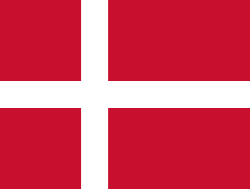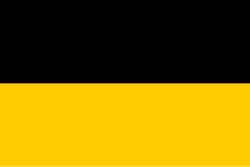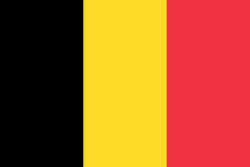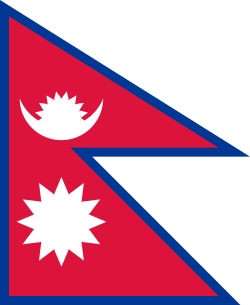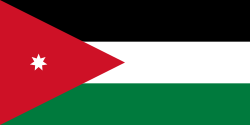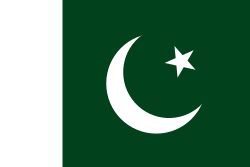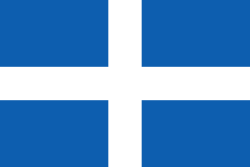Victoriakedjan
| Kungliga Victoriakedjan Royal Victorian Chain | |
 | |
| Utdelas av | Storbritanniens och samväldesrikenas monark |
|---|---|
| Land | |
| Typ | Utmärkelse |
| Kungahus | Huset Windsor |
| Motto | FOR MERIT |
| Behörighet | Alla nationaliteter |
| Utdelas för | Efter monarkens godtycke |
| Status | Aktiv |
| Härskare/mästare | Charles III |
| Grader | 1 |
| Statistik | |
| Instiftad | 1902 |
| Första utdelning | 9 augusti 1902 |
| Rang | |
| Besläktad | Victoriaorden |
| Släpspänne | |
Victoriakedjan, formellt Kungliga Victoriakedjan (engelska: Royal Victorian Chain), är en brittisk kunglig utmärkelse, instiftad av kung Edvard VII och utdelades första gången i samband med dennes kröning, 9 augusti 1902. Den instiftandes till minnet av kung Edvard VII:s mor, drottning Victoria av Storbritannien.[1]
Victoriakedjan har enbart en grad. Den brittiska monarken beslutar själv om tilldelning. Victoriakedjan betraktas ibland som sammanhörande med Victoriaorden på grund av namnet och färger på ordensband och släpspänne.[2][3]
Kedjan
Kedjan är i guld och utsmyckad med Tudorros (symboliserande England och Wales), tistel (symboliserande Skottland), shamrock (symboliserande Irland) samt lotusblomma (symboliserande Indien) och med en sluten krona krönt monogram för kung Edvard VII, ERI (latin: Edwardus Rex Imperator; Edvard Kung Kejsare). Kedjan bärs runt halsen i uniform eller högtidsdräkt. Kvinnor bär den vanligen som ett band på bröstet, men prinsessan Margaret valde att istället bära kedjan som män.
Själva tecknet är ett vitemaljerat ovalt malteserkors med drottning Victorias monogram i guld på röd bakgrund med blå ram: VRI (latin: Victoria Regina Imperatrix; Victoria Drottning Kejsarinna). Både kronan och monogramet är utsmyckad med diamanter.
Innehavare
Victoriakedjan har traditionellt utdelats till utländska kungligheter, främst regerande monarker på inkommande statsbesök (dessa ges vanligen även Strumpebandsorden; monarker som inte tilldelas Strumpebandsorden liksom republikanska statschefer ges vanligen Bathorden eller Sankt Mikaels och Sankt Georgsorden). Ärkebiskopar av Canterbury och höga hovfunktionärer har av tradition hört till det fåtal britter utanför kungahuset som tilldelats Victoriakedjan.[4]
Levande
 Drottning Margrethe II (1974)[5]
Drottning Margrethe II (1974)[5] Kung Carl XVI Gustaf (1975)[5]
Kung Carl XVI Gustaf (1975)[5] Drottning Beatrix (1982)[5]
Drottning Beatrix (1982)[5] President António Ramalho Eanes (1985)
President António Ramalho Eanes (1985) Kung Juan Carlos I (1986)[5]
Kung Juan Carlos I (1986)[5] Kung Harald V (1994)[5]
Kung Harald V (1994)[5] George Carey (2002)[6]
George Carey (2002)[6] Rowan Williams (2012)[7]
Rowan Williams (2012)[7] William Peel, 3:e earl Peel (2021)[8]
William Peel, 3:e earl Peel (2021)[8]
Avlidna (urval)
 Prins Georg, prins av Wales (sedermera kung Georg V) (1902)
Prins Georg, prins av Wales (sedermera kung Georg V) (1902) Prins Arthur, hertig av Connaught och Strathearn (1902)
Prins Arthur, hertig av Connaught och Strathearn (1902) Kronprins Fredrik (sedermera kung Fredrik VIII) (1902)
Kronprins Fredrik (sedermera kung Fredrik VIII) (1902) Prins Carl (sedermera kung Håkon VII av Norge) (1902)
Prins Carl (sedermera kung Håkon VII av Norge) (1902) Kronprins Konstantin (sedermera kung Konstantin I) (1902)
Kronprins Konstantin (sedermera kung Konstantin I) (1902) Prins Henrik (1902, åter 1915)
Prins Henrik (1902, åter 1915) John Campbell, 9:e hertig av Argyll (1902)
John Campbell, 9:e hertig av Argyll (1902) Prins Fredrik Kristian av Augustenburg (1902)
Prins Fredrik Kristian av Augustenburg (1902) Alexander Duff, 1:e hertig av Fife (1902)
Alexander Duff, 1:e hertig av Fife (1902) Kejsar Vilhelm II (1902, åter 1915)
Kejsar Vilhelm II (1902, åter 1915) Kung Karl I (1902)
Kung Karl I (1902) Frederick Temple (1902)
Frederick Temple (1902) George Curzon, 1:e markis Curzon av Kedleston (1903)
George Curzon, 1:e markis Curzon av Kedleston (1903) Storhertig Ernst Ludvig (1902)
Storhertig Ernst Ludvig (1902) Kung Viktor Emanuel III (1903, åter 1941)
Kung Viktor Emanuel III (1903, åter 1941) Tsar Nikolaj II (1904)[9]
Tsar Nikolaj II (1904)[9] Kejsar Frans Josef I (1904, åter 1915)[9]
Kejsar Frans Josef I (1904, åter 1915)[9] Kung Kristian IX (1904)
Kung Kristian IX (1904) Kronprins Wilhelm (1904, åter 1915)
Kronprins Wilhelm (1904, åter 1915) Kung Alfons XIII (1905)[10]
Kung Alfons XIII (1905)[10] Khediv Abbas II (1905)[11]
Khediv Abbas II (1905)[11] Kung Georg I (1905)[12]
Kung Georg I (1905)[12] Henry Petty-Fitzmaurice, 5:e markis av Lansdowne (1905)[13]
Henry Petty-Fitzmaurice, 5:e markis av Lansdowne (1905)[13] Prins Arthur av Connaught (1906)[14]
Prins Arthur av Connaught (1906)[14] Kung Gustaf V (1908)[15]
Kung Gustaf V (1908)[15] President Armand Fallières (1908)[16]
President Armand Fallières (1908)[16] Randall Davidson (1911)
Randall Davidson (1911) Henry Fitzalan-Howard, 15:e hertig av Norfolk (1911)
Henry Fitzalan-Howard, 15:e hertig av Norfolk (1911) Robert Crewe-Milnes, 1:e markis av Crewe (1912)
Robert Crewe-Milnes, 1:e markis av Crewe (1912) Charles Hardinge, 1:e baron Hardinge av Penshurst (1912)
Charles Hardinge, 1:e baron Hardinge av Penshurst (1912) Archibald Primrose, 5:e earl av Rosebery (1917)
Archibald Primrose, 5:e earl av Rosebery (1917) Prins Edvard, prins av Wales (sedermera kung Edvard VIII) (1921)
Prins Edvard, prins av Wales (sedermera kung Edvard VIII) (1921) Cosmo Gordon Lang (1923)[17]
Cosmo Gordon Lang (1923)[17] Kronprins Gustaf Adolf (sedermera kung Gustaf VI Adolf) (1923)
Kronprins Gustaf Adolf (sedermera kung Gustaf VI Adolf) (1923) Prins Albert, hertig av York (sedermera kung Georg VI) (1927)
Prins Albert, hertig av York (sedermera kung Georg VI) (1927) Amanullah Khan (1928)
Amanullah Khan (1928) Nobuhito, prins Takamatsu (1930, åter 1942)
Nobuhito, prins Takamatsu (1930, åter 1942) Kejsar Haile Selassie (1930)[5]
Kejsar Haile Selassie (1930)[5] Prins Henry, hertig av Gloucester (1932)[18]
Prins Henry, hertig av Gloucester (1932)[18] William Cavendish-Bentinck, 6:e hertig av Portland (1932)[19]
William Cavendish-Bentinck, 6:e hertig av Portland (1932)[19] Prinsregent Paul (1934)
Prinsregent Paul (1934) Edward Stanley, 17:e earl av Derby (1935)[20]
Edward Stanley, 17:e earl av Derby (1935)[20] Prins Umberto (sedermera kung Umberto II) (1935)
Prins Umberto (sedermera kung Umberto II) (1935) Alexander Cambridge, 1:e earl av Athlone (1935)
Alexander Cambridge, 1:e earl av Athlone (1935) Prins Georg, hertig av Kent (1936)
Prins Georg, hertig av Kent (1936) Yasuhito, prins Chichibu (1937)
Yasuhito, prins Chichibu (1937) Drottning Elizabeth (1937)[21]
Drottning Elizabeth (1937)[21] Drottning Mary (1937)[21]
Drottning Mary (1937)[21] Kung Leopold III (1937)
Kung Leopold III (1937) James Hamilton, 3:e hertig av Abercorn (1945)[22]
James Hamilton, 3:e hertig av Abercorn (1945)[22] Nizam Asaf Jah VII (1946)[23]
Nizam Asaf Jah VII (1946)[23] Mohammad Reza Pahlavi (1948)
Mohammad Reza Pahlavi (1948) Drottning Juliana (1950)[5]
Drottning Juliana (1950)[5] George Villiers, 6:e earl av Clarendon (1952)[24]
George Villiers, 6:e earl av Clarendon (1952)[24] Bernard Fitzalan-Howard, 16:e hertig av Norfolk (1953)[25]
Bernard Fitzalan-Howard, 16:e hertig av Norfolk (1953)[25] Henry Somerset, 10:e hertig av Beaufort (1953)[25]
Henry Somerset, 10:e hertig av Beaufort (1953)[25] Kronprins Olav (sedermera kung Olav V) (1955)[5]
Kronprins Olav (sedermera kung Olav V) (1955)[5] Kung Faisal II (1955)
Kung Faisal II (1955) President Francisco Craveiro Lopes (1957)
President Francisco Craveiro Lopes (1957) Kung Fredrik IX (1957)
Kung Fredrik IX (1957) Kung Bhumibol Adulyadej (1960)
Kung Bhumibol Adulyadej (1960) President Charles de Gaulle (1960)[5]
President Charles de Gaulle (1960)[5] Kung Mahendra (1961)
Kung Mahendra (1961) Kung Hussein (1966)
Kung Hussein (1966) President Mohammad Ayub Khan (1966)
President Mohammad Ayub Khan (1966) Kung Faisal (1967)
Kung Faisal (1967) Zahir Shah (1972)
Zahir Shah (1972) Kung Birendra (1975)
Kung Birendra (1975) Kung Khalid (1981)
Kung Khalid (1981) Kung Fahd (1987)
Kung Fahd (1987) Prinsessan Margaret (1990)[26]
Prinsessan Margaret (1990)[26] Robert Runcie (1991)[27]
Robert Runcie (1991)[27] President François Mitterrand (1992)[5]
President François Mitterrand (1992)[5] Förbundspresident Richard von Weizsäcker (1992)
Förbundspresident Richard von Weizsäcker (1992) David Ogilvy, 13:e earl av Airlie (1997)[28]
David Ogilvy, 13:e earl av Airlie (1997)[28] Miles Fitzalan-Howard, 17:e hertig av Norfolk (2000)[29]
Miles Fitzalan-Howard, 17:e hertig av Norfolk (2000)[29] Prins Philip, hertig av Edinburgh (2007)[30]
Prins Philip, hertig av Edinburgh (2007)[30] Kung Abdullah (2007)
Kung Abdullah (2007) Sultan Qabus (2010)
Sultan Qabus (2010)
Se även
- Companions of Honour
- Förtjänstorden
- Victoriakorset
Referenser
- Den här artikeln är helt eller delvis baserad på material från engelskspråkiga Wikipedia, Royal Victorian Chain, tidigare version.
- Den här artikeln är helt eller delvis baserad på material från engelskspråkiga Wikipedia, List of recipients of the Royal Victorian Chain, tidigare version.
Noter
- ^ ”Victoriakedjan”. www.ne.se. Nationalencyklopedin. https://www.ne.se/uppslagsverk/encyklopedi/l%C3%A5ng/victoriakedjan. Läst 25 februari 2024.
- ^ ”The Royal Victorian Order” (på engelska). www.centralchancery.org.uk. Central Chancery of the Orders of Knighthood. https://www.centralchancery.org.uk/orders-of-chivalry/the-royal-victorian-order/. Läst 25 februari 2024.
- ^ ”The Honours System of the United Kingdom - History” (på engelska). honours.cabinetoffice.gov.uk. Cabinet Office. https://honours.cabinetoffice.gov.uk/about/history/. Läst 25 februari 2022.
- ^ Malloch, Russell (23 april 2023). ”King Charles III and The Gazette: British honours” (på engelska). www.thegazette.co.uk. The London Gazette. https://www.thegazette.co.uk/all-notices/content/104161. Läst 25 februari 2024.
- ^ [a b c d e f g h i j] Malloch, Russell (14 november 2022). ”The Order of the Garter and Queen Elizabeth: part 3” (på engelska). www.thegazette.co.uk. The London Gazette. https://www.thegazette.co.uk/awards-and-accreditation/content/104111. Läst 26 februari 2024.
- ^ ”No. 56749”, The London Gazette, 12 November 2002, https://www.thegazette.co.uk/London/issue/56749/page/1
- ^ ”No. 60392”, The London Gazette, 15 January 2013, https://www.thegazette.co.uk/London/issue/60392/page/1
- ^ ”No. 63322”, The London Gazette, 15 April 2021, https://www.thegazette.co.uk/London/issue/63322/page/7050
- ^ [a b] ”No. 27711”, The London Gazette, 6 September 1904, https://www.thegazette.co.uk/London/issue/27711/page/
- ^ ”No. 27803”, The London Gazette, 9 June 1905, https://www.thegazette.co.uk/London/issue/27803/page/
- ^ ”No. 27807”, The London Gazette, 16 June 1905, https://www.thegazette.co.uk/London/issue/27807/page/
- ^ ”No. 27859”, The London Gazette, 1 December 1905, https://www.thegazette.co.uk/London/issue/27859/page/
- ^ ”No. 27866”, The London Gazette, 22 December 1905, https://www.thegazette.co.uk/London/issue/27866/page/
- ^ ”No. 27916”, The London Gazette, 25 May 1906, https://www.thegazette.co.uk/London/issue/27916/page/
- ^ ”No. 28134”, The London Gazette, 5 May 1908, https://www.thegazette.co.uk/London/issue/28134/page/
- ^ ”No. 28141”, The London Gazette, 29 May 1908, https://www.thegazette.co.uk/London/issue/28141/page/
- ^ ”No. 32819”, The London Gazette, 1 May 1923, https://www.thegazette.co.uk/London/issue/32819/page/
- ^ ”No. 33831”, The London Gazette, 31 May 1932, https://www.thegazette.co.uk/London/issue/33831/page/
- ^ ”No. 33836”, The London Gazette, 17 June 1932, https://www.thegazette.co.uk/London/issue/33836/page/
- ^ ”No. 34119”, The London Gazette, 28 December 1934, https://www.thegazette.co.uk/London/issue/34119/page/
- ^ [a b] ”No. 34396”, The London Gazette, 11 May 1937, https://www.thegazette.co.uk/London/issue/34396/page/
- ^ ”No. 37216”, The London Gazette, 10 August 1945, https://www.thegazette.co.uk/London/issue/37216/page/
- ^ ”No. 37407”, The London Gazette, 28 December 1945, https://www.thegazette.co.uk/London/issue/37407/page/
- ^ ”No. 39678”, The London Gazette, 24 October 1952, https://www.thegazette.co.uk/London/issue/39678/page/
- ^ [a b] ”No. 39863”, The London Gazette, 26 May 1953, https://www.thegazette.co.uk/London/issue/39863/page/
- ^ ”No. 52253”, The London Gazette, 24 August 1990, https://www.thegazette.co.uk/London/issue/52253/page/
- ^ ”No. 52450”, The London Gazette, 15 February 1991, https://www.thegazette.co.uk/London/issue/52450/page/
- ^ ”No. 54984”, The London Gazette, 19 December 1997, https://www.thegazette.co.uk/London/issue/54984/page/
- ^ ”No. 56024”, The London Gazette, 10 November 2000, https://www.thegazette.co.uk/London/issue/56024/page/
- ^ ”No. 58519”, The London Gazette, 22 November 2007, https://www.thegazette.co.uk/London/issue/58519/page/
Externa länkar
 Wikimedia Commons har media som rör Victoriakedjan.
Wikimedia Commons har media som rör Victoriakedjan.
Media som används på denna webbplats
Flag of Portugal, created by Columbano Bordalo Pinheiro (1857–1929), officially adopted by Portuguese government in June 30th 1911 (in use since about November 1910). Color shades matching the RGB values officially reccomended here. (PMS values should be used for direct ink or textile; CMYK for 4-color offset printing on paper; this is an image for screen display, RGB should be used.)
Författare/Upphovsman: Gutten på Hemsen, Licens: CC0
Flag of Norway with colors from the previous version on Commons. This file is used to discuss the colors of the Norwegian flag.
Flag of the Germans(1866-1871)
Författare/Upphovsman: F l a n k e r, Licens: CC BY-SA 2.5
Flag of the Kingdom of Sardinia (1851-1861) and of the Kingdom of Italy (1861-1946). Use: Civil flag and ensign. In a governmental or a military context, the crowned version (see Crowned version) was always used (as State flag and naval ensign).
Ryska Imperiets flagga 1858—1896
House colours of the House of Habsburg
Pan-Slavic flag. Emerged from 1848 Prague pan-Slavic conference, or interpretations of the resolutions of the conference. Drawn by Fibonacci.
The civil ensign and flag of Belgium. It is identical to Image:Flag of Belgium.svg except that it has a 2:3 ratio, instead of 13:15.
State Flag of Iran, 1933-1964
The national flag of Kingdom of Thailand; there are total of 3 colours:
- Red represents the blood spilt to protect Thailand’s independence and often more simply described as representing the nation.
- White represents the religion of Buddhism, the predominant religion of the nation
- Blue represents the monarchy of the nation, which is recognised as the centre of Thai hearts.
Författare/Upphovsman: See File history below for details., Licens: CC0
Flag of Oman
Ryska Imperiets flagga 1858—1896
The flag of the Ethiopian Empire with the Lion of Judah in the center
Flag of Portugal, land use (1830-1910).
Författare/Upphovsman: The Radioactive Box, Licens: CC0
Ribbon bar for Royal Victorian Chain
Flag of the Germans(1866-1871)
The Asafia flag of Hyderabad. The script along the top reads Al Azmatulillah meaning "All greatness is for God". The bottom script reads Ya Uthman which translates to "Oh Uthman". The writing in the middle reads "Nizam-ul-Mulk Asif Jah"
State Flag of Iran, 1933-1964
Författare/Upphovsman: R Kovalenko, Licens: CC BY-SA 4.0
Изображение Знака на Королевской Викторианской цепи
Flag of the Grand Duchy of Hesse without arms; Ratio (4:5)
The flag of Afghanistan between 1931 and 1973 (1311–1352 A.P., 1351–1393 A.H.).
Pan-Slavic flag. Emerged from 1848 Prague pan-Slavic conference, or interpretations of the resolutions of the conference. Drawn by Fibonacci.
Författare/Upphovsman: Fornax., Licens: CC BY-SA 3.0
The flag of Afghanistan between July and September 1928.
Flagga Grekland (1822-1969) och (1974-1978), Årsdag flagga Grekland (1978 - )

